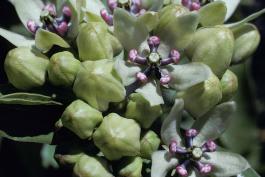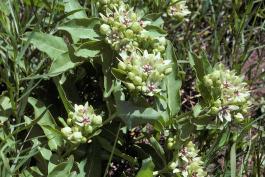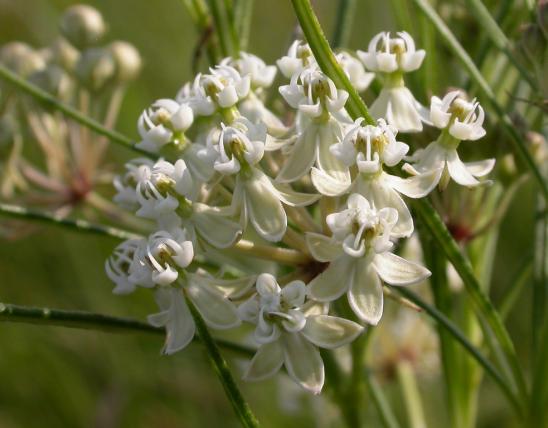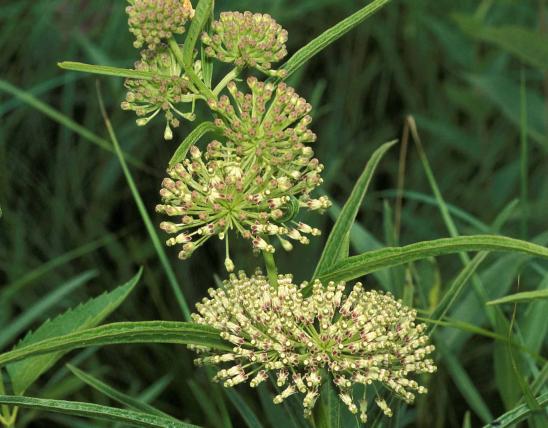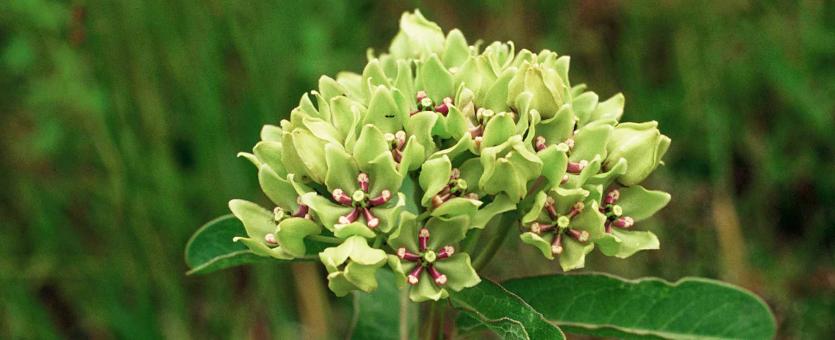
Green-flowered milkweed, or spider milkweed, is an herbaceous perennial, erect or spreading, sometimes few-branching toward the tip. The sap is milky. The flowers are large for a milkweed, some reaching 1 inch wide, with green or greenish-white petals that spread upward (not back) and hoods (the upper part of the flower) violet to purple. The flowers are in one or a few round clusters at the tops of the plant, with 3–20 flowers per cluster. Blooms May–June. The leaves are alternate, on very short stalks, broadly oblong, narrowing toward the base, to 4½ inches long. The fruits are smooth, erect pods, lance-shaped to oval in outline, to 5 inches long, bearing seeds each with a tuft of white or whitish hairs.
Similar species: Missouri has several other species of milkweeds. Learn more about them on their group page and on the several other individual species pages in this guide.
Height: 8–24 inches.
Scattered mostly south of the Missouri River.
Habitat and Conservation
Occurs in upland prairies and glades, usually on calcareous substrates; also along roadsides and railroads.
Status
The entire former milkweed family (Asclepiadaceae) has fairly recently been rolled into the dogbane family (Apocynaceae). For many years, botanists have known the two families were closely related. The milkweed group, with its distinct floral structures, is still considered a unique subfamily or tribe of the dogbane family. As you consult various sources, you can expect to see milkweeds grouped in either family.
Human Connections
In bloom, this is a dazzling plant. Native wildflower gardeners are growing more milkweeds in order to help monarch butterflies, whose populations are declining. Milkweeds have a long list of historical medicinal uses. They have had many other uses, too.
Ecosystem Connections
Many bees, butterflies, and skippers drink nectar from the flowers, and crab spiders often hide in the clusters, hunting them. Monarch butterflies use milkweeds as larval food plants, collecting the sap's toxic cardiac gycosides in their bodies and becoming unpalatable to predators.





